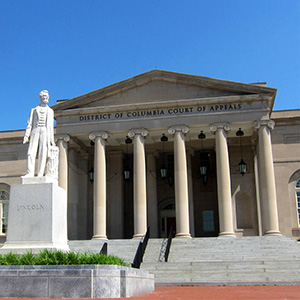D.C. Leaders Lay Out New Election Procedures
September 24, 2020
D.C. Councilmember Charles Allen and Executive Director of the D.C. Board of Elections Alice Miller spoke about new voting procedures in the District.
During the D.C. Bar Communities webinar “The 2020 Elections Process in D.C.: Access, Accommodations, and Changes in a COVID-19 Environment” on September 23, local leaders discussed efforts underway to ensure that the District offers a safe and fair electoral process in the November election. Just 40 days remain before election day, but panelists noted that, for many, the opportunity to vote would arrive much sooner. “The election process actually begins in about 10 days,” said Charles Allen, councilmember for Ward 6 and chair of the D.C. Committee on the Judiciary and Public Safety. Mail-in ballots will be sent to all registered D.C. voters the first week of October.
Kathy Chiron, president of the League of Women Voters of the District of Columbia, explained the various voting options for D.C. residents. Voters can drop a completed ballot in one of the 55 secure ballot boxes located throughout the city, mail a ballot using the postage-paid envelope provided, vote early at one of the city’s polling centers, or vote at a polling center on election day.
Allen cautioned, however, that those opting to vote in-person should expect long lines, both on election day and during early voting. Alice Miller, executive director of the D.C. Board of Elections, says that this is partly due to efforts undertaken to ensure the safety of in-person voters. Polling locations will limit the number of people permitted inside the facility at any given time. Polling stations will have plexiglass dividers and be placed 6 feet apart. Those waiting in lines will maintain a 6-foot distance. Voting touchscreens will be wiped with alcohol swabs between voters, and even the iconic “I Voted” stickers will be sanitized and presented in individual plastic bags. Poll workers will be outfitted with PPE, and individually wrapped face masks will be on hand for voters who neglect to bring their own.
These precautions are virtually certain to result in longer than usual delays. “It takes time to ensure that things are done correctly,” Miller says. “Be prepared and be willing to wait.” Of course, one way to avoid the lines is to vote early by mail. Those who haven’t yet registered to vote can still do so before October 13 and receive a ballot in time to vote by mail, though Miller cautions that “if you haven’t gotten a ballot by October 21, you should plan for in-person voting.”
Miller and other panelists called attention to resources for voters. Chiron promoted her organization’s project VOTE411.org, which provides detailed information about candidates, voter registration, and related topics, while Miller pointed to the D.C. Board of Election’s tool to search for ballot drop-off locations, early voting centers, and election day voting centers. She reminded attendants that District residents no longer need to vote within their precinct. Voters are free to cast their ballot at any of the polling sites.
Chiron says that seniors and the disabled in assisted living facilities, as well as inmates, will receive ballots and be provided a secure ballot drop-off within their location. All voting centers, apart from the “supercenter” locations, will have curbside voting for people with disabilities.
The panel also addressed some ongoing concerns about the election and voting in general. Community advocate Jeremiah Lowery said that organizations should continue to partner with universities, student groups, and high schools to improve the civic education of the District’s youth. He also said that young people tend to miss deadlines, making it important to publicize the ability of voters to register the day of the election. Same-day registrants should be sure to bring proof of residence. Those failing to do so will still vote on a provisional ballot and provide proof of residence later, but those who can document their status will vote normally.
Allen outlined measures implemented to prevent the tampering or destruction of ballots in the city’s secure ballot drop-off locations, while also pointing out that the District is far from a swing jurisdiction, making it an unlikely target for tampering. Miller responded to recent news items regarding the absence of a polling supercenter in Wards 7 and 8, describing unsuccessful efforts to secure a suitable location. Instead, she said, more voting centers and drop boxes were allocated to those areas.
The group also offered their thoughts about future improvements to District voting, including expanding outreach to underserved communities, implementing ranked-choice voting, and reducing the voting age. One big priority, Chiron said, is the extension of full rights to the District. “We would love to have voting representation in Congress,” she said.
"The 2020 Elections Process in D.C.: Access, Accommodations and Changes in a Covid-19 Environment" is available on-demand here.





